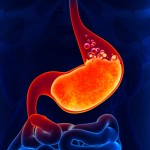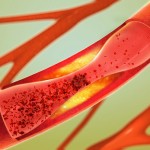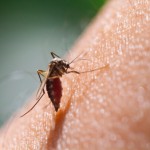

Bel Marra Health’s weekly health news roundup offers you recent news stories on ulcerative colitis, rheumatoid arthritis, Zika virus, and burning stomach. We discuss natural ways to treat ulcerative colitis, the similarities and differences between Zika and dengue, causes and remedies for a burning stomach, and the increased risk of deep vein thrombosis (blood clots in legs) in rheumatoid arthritis patients.
In case you missed these health stories, we have compiled them into this weekly news roundup for your peruse.
 Ulcerative colitis natural treatment with herbal home remedies and exercise
Ulcerative colitis natural treatment with herbal home remedies and exerciseUlcerative colitis is an inflammatory bowel disease (IBD) and treatment for the condition depends on its severity. A combination of both medical and natural remedies can benefit patients with ulcerative colitis, with diet in particular playing a large role.
Common treatment options for ulcerative colitis include medication, combination therapy, which mixes two types of treatments together, changes in diet and nutrition, and, lastly, surgery – when medications are not successful or complications arise.
Ulcerative colitis symptoms can vary from person to person and may respond differently to different treatment methods. Symptoms may respond well to antidiarrheal medications, enemas, suppositories with medication, anti-inflammatory medications, steroid medications, and changes to diet. Working closely with your doctor can help you choose the proper treatment that will offer you the greatest success.
But along with medical treatments, natural home remedies – such as diet and exercise – can help aid with ulcerative colitis symptoms, too. Let us explain how you and your condition can benefit from these natural remedies. Continue reading…
 Burning sensation in stomach, burning stomach causes and natural home remedies
Burning sensation in stomach, burning stomach causes and natural home remediesA burning stomach, or a burning sensation in the stomach, can cause pain, fatigue, and stress to the stomach. Burning stomach is becoming a growing and common problem as a result of indigestible food, health problems, infections, overuse of antibiotics, and chlorinated water, to name a few causes.
The stomach is a muscular sack between the esophagus and small intestine. The stomach is responsible for digesting food before it enters the intestines to be broken down further. If food is not properly broken down in the stomach, it can cause a clog along the intestines, resulting in indigestion or heartburn.
The stomach breaks down food with enzymes and acids. The food is mixed with water and gastric juices to break down into what is known as chyme. Chyme then moves into the intestines and breaks down further until it exits the colon. Continue reading…
 Rheumatoid arthritis increases deep vein thrombosis (blood clots in legs) and blood clot in lungs risk, study
Rheumatoid arthritis increases deep vein thrombosis (blood clots in legs) and blood clot in lungs risk, studyRheumatoid arthritis increases the risk of deep vein thrombosis (blood clots in legs) and blood clots in lungs, according to research. The findings revealed that individuals with rheumatoid arthritis – an inflammatory type of arthritis – have triple the risk of developing deep vein thrombosis and double the risk of pulmonary thromboembolism (blood clotting in the lungs), compared to individuals without rheumatoid arthritis.
Dr. Tore Kvien, editor-in-chief of the journal Annals of the Rheumatic Diseases and head of rheumatology at Diakonhjemmet Hospital in Oslo, Norway, said, “I would call this a moderate increased risk.”
“This study is consistent with what our study and other published papers found,” added Dr. Seoyoung Kim, assistant professor of medicine at Brigham and Women’s Hospital and Harvard Medical School in Boston. Dr. Kim’s team also found a similar association in their study.
For the study, researchers used a national database to select 30,000 rheumatoid arthritis patients whom they monitored for the development of blood clots for two years. The data was compared to 117,000 individuals without rheumatoid arthritis.
After adjusting for other risk factors that could lead to blood clots, rheumatoid arthritis patients still had a higher risk of blood clots compared to patients without the condition. Furthermore, patients under the age of 50 were at highest risk.
Although the researchers are unaware of the mechanisms that could link rheumatoid arthritis to blood clots, they suspect that inflammation plays a role.
The researchers suggest that rheumatoid arthritis patients who require surgery, cancer treatment, or hospitalization should be put on a clot-prevention program and follow a healthy lifestyle to further reduce their risk of blood clots. Continue reading…
 Zika virus vs. Dengue, differences in symptoms, treatment, and prevention
Zika virus vs. Dengue, differences in symptoms, treatment, and preventionZika virus and dengue are two illnesses that are transmitted by mosquitoes. Both Zika and dengue are illnesses that are growing a problem. Although there may be many similarities between the two, they both have their own unique differences, which helps to diagnose them and determine proper treatment.
Dengue was first recognized in the 1950s when epidemics broke out in the Philippines and Thailand. Zika was first discovered in 1947 and got its name after the Zika forest in Uganda, Africa. Dengue commonly affects Asian and Latin American countries, and Zika is growing in tropical Africa, Southeast Asia, and the Pacific Islands. As of recently, a large Zika outbreak has been seen in Brazil and cases are popping up around the world.
There is far more information available about dengue as opposed to Zika. Research on Zika is ongoing to better understand the virus and its complications, and hopefully one day develop a vaccine or even a cure for it. Continue reading…
 Childhood celiac disease discovery offers new potential treatments, new risk factors also found
Childhood celiac disease discovery offers new potential treatments, new risk factors also foundChildhood celiac disease discovery offers new potential treatments. The findings come from a team of Australian researchers who found that children with celiac disease reacted against the same toxic proteins in gluten as seen in adults with celiac disease. Previous theory speculated that childhood celiac disease was different than adult celiac disease. The new findings suggest treatment and diagnostic tests for adults with celiac could be utilized in children with celiac disease.
The potential new treatment is an immunotherapy that helps train the immune system to tolerate gluten, allowing some patients to reintroduce gluten back into their diets.
The treatment is being developed by a U.S. biotechnology company and is based on the research from the Walter and Eliza Hall Institute entering its second phase of clinical trials.
For the study, researchers looked at over 40 children who were tested to see what would happen if gluten was reintroduced into their diets. Dr. Jason Tye-Din said, “We asked the children to eat wheat bread for three days, and then studied the immune response that appeared in their bloodstream. Contrary to the prevailing theory, and to our surprise, we found that children reacted to the same key peptides of gluten that we had previously identified as toxic in adults with celiac disease. This is an important finding that has major implications for the relevance of new diagnostic tests and treatments under development for people with celiac disease.”
Previous research shed light on the fact that children may have a different immune response to gluten than adults, but the new findings suggest otherwise. “In contrast to earlier studies, this is the first time celiac disease in children has been studied this way and to this level of detail. There is a real need for better diagnosis and treatment of celiac disease for all ages. Our findings are exciting as they support the view that new treatments and tests under development for adults with celiac disease are likely to apply to children.” Continue reading…
Copyright © www.orthopaedics.win Bone Health All Rights Reserved